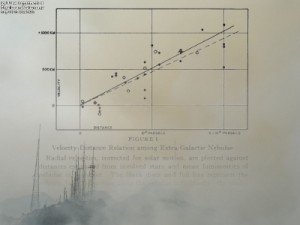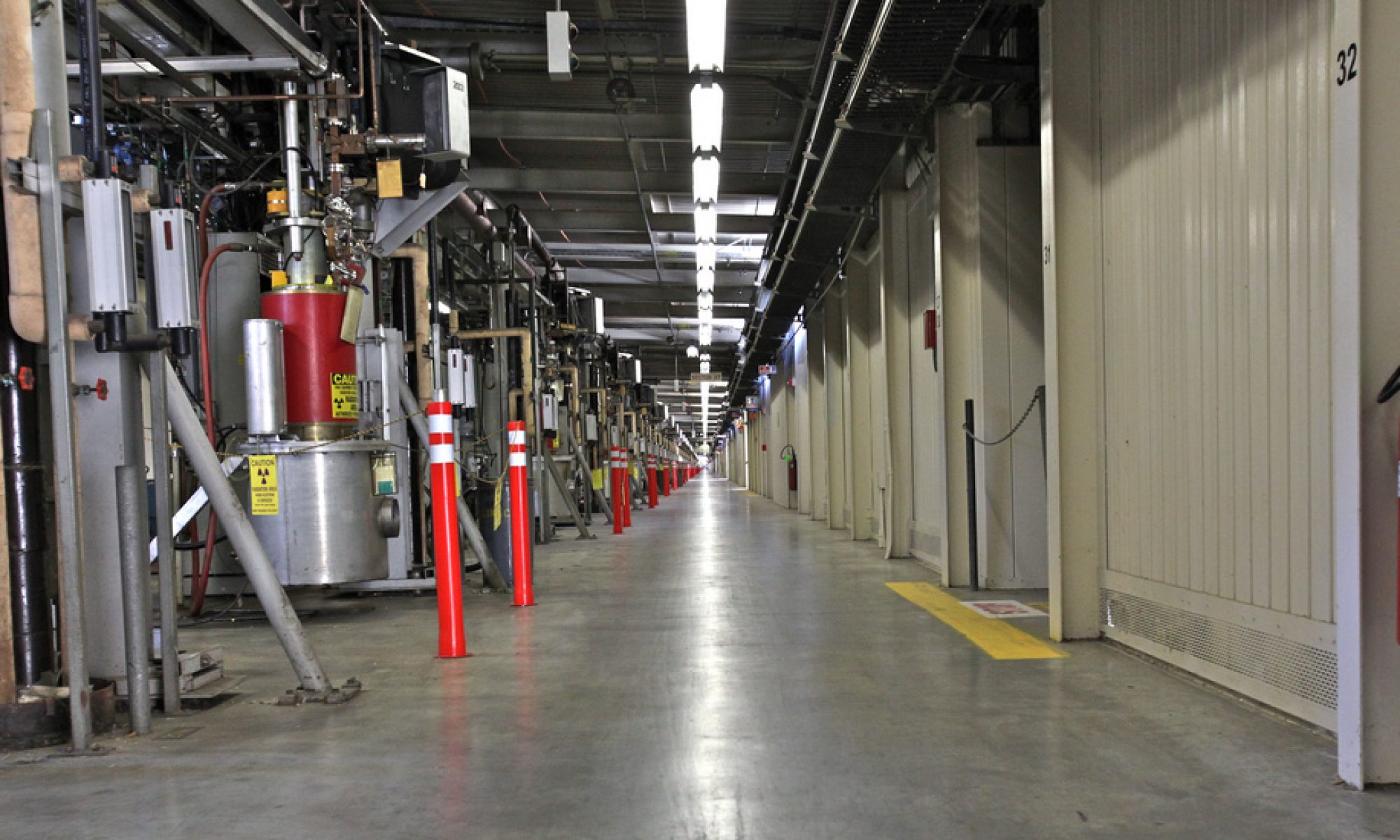
Mt. Wilson is covered in smoke. The UCLA webcam, mounted on a tower near the observatory, snaps one last image around 1:30 pm [1]. According to the website, they believe communication has been lost due to back fire destroying the internet connection to the observatory. The observatory was said to be out of harm’s way just yesterday, and the latest news still seems to be that it’s not under direct threat.
The possibility of losing the Mt. Wilson observatory got me thinking quite a bit about what the observatory means to me (quite apart from the fact that Jodi is teaching cosmology this semester). The history of the observatory plays a vital role in the knowledge I was taught when I was trained to be a scientist. Most notable is the fact that Edwin Hubble, among the most famous astronomers of the 20th century, used the observatory to make several transformative discoveries.
One of those discoveries was that the redshift of light from distant galaxies increases with the distance of the galaxy from the Earth. The data was not perfect, the conclusions inaccurate by modern standards; nonetheless, they were revolutionary. The data indicated that galaxies far away, whose light has traveled millions of light-years before reaching us, have light that is more red than galaxies closer to us. Their light waves are being stretched, not by the motion of the galaxies themselves but by the expansion of space-time through which the light is traveling. This expansion could be seen in the data, albeit not very accurately. Regardless, it was there.
When I was in college, the universe was believed to be an ever-expanding volume, extending not into old space-time but instead defining new space-time at its boundaries as it grew. It was also believed that any of three scenarios was possible: the universe would expand forever, its own mass density slowing the expansion through the action of gravity; the universe would stop expanding, the expansion ground to a halt by gravity; or the universe would eventually recollapse, as gravity overcame the expansion and reversed it. When I entered graduate school, a new picture was emerging. Data from distant supernovae were whispering a tale, one seemingly dismissed as it was not one of the three fates I learned from books and TV. The supernovae suggested that the universe was not just expanding; it was doing so faster and faster with each passing second.
A new story, a new potential fate for the universe began to emerge. A runaway cosmos, expanding faster all the time, may one day expand so fast that the stretching of space-time will tear apart atoms. Instead of a “big crunch”, where the universe collapses, there might be a “big rip,” where the cosmos can’t even hold itself together any longer.
While the accelerating expansion seemed to be a fact, the cause of the acceleration remains unknown today. It is one of two huge mysteries about the cosmos, and its mysterious cause has an equally mysterious label: “dark energy.”
The nature of the dark universe is one of the great challenges to modern physics. Why is so much of the matter in the universe non-luminous? What makes up the dark matter? What is pushing the universe apart? Will it ever stop pushing?
Edwin Hubble’s work started something great, and like all discoveries in science built on the work of others. The observations at Mt. Wilson of the redshifts of distant galaxies has become a cornerstone of astronomy. The interpretation of the observations as evidence for the expanding universe set the stage for the modern mystery of dark energy.
I’m keeping a close eye on Mt. Wilson, not because I long for the days gone by but because of those yet to come. The improvements made to the telescope have kept it at the leading edge of astronomy through the modern era. The service of the telescope to public education cannot be neglected. We are fortunate to have places like this where people can to to learn and inquire. I just hope the fire continues to remain under control in that area.

